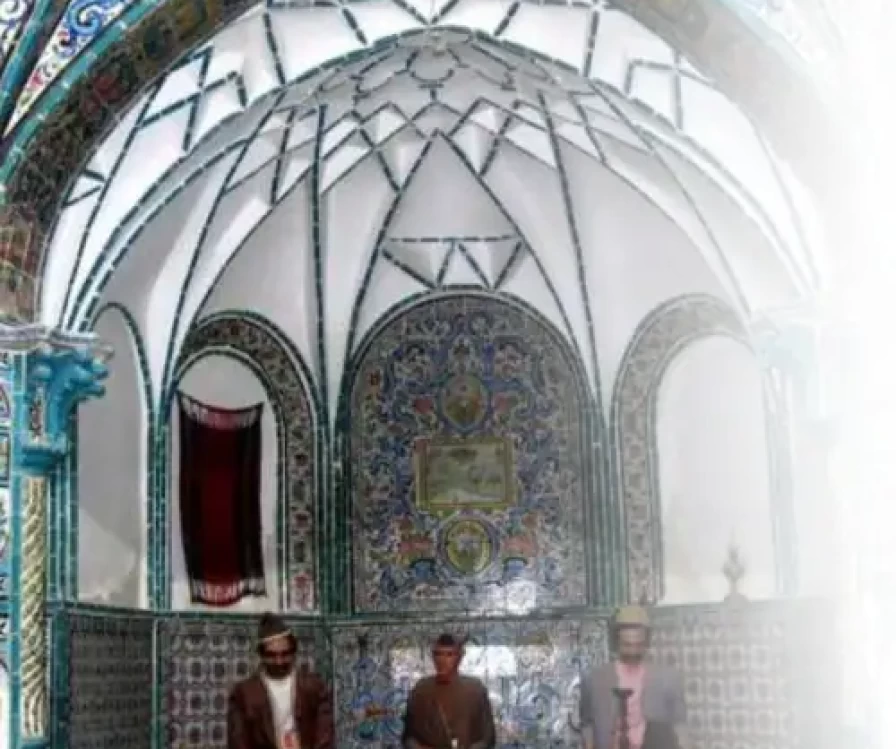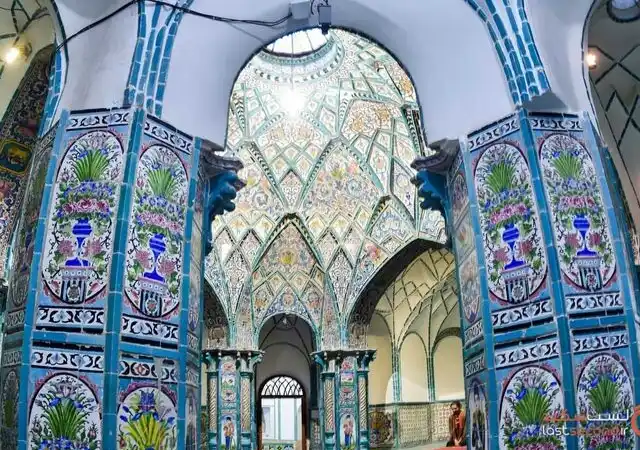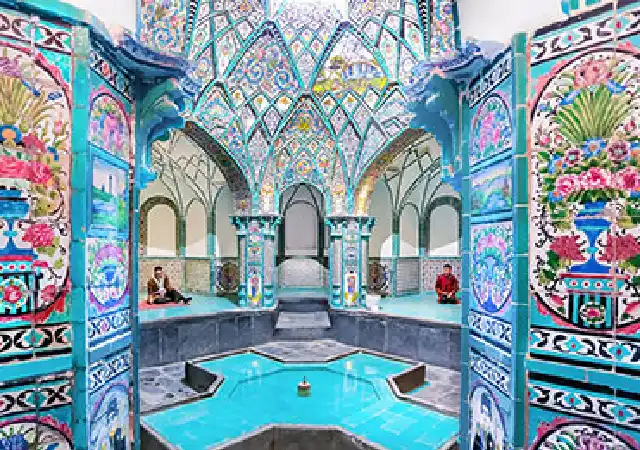
Four Seasons Bathhouse





Four Seasons Bathhouse
In Islam, cleanliness is of utmost importance, and the need for purification rituals before performing religious duties like prayer has led to the construction and maintenance of bathhouses with specific functions and standard systems. Many of these bathhouses were built by philanthropists and wealthy individuals, viewed as a way to earn merit for the afterlife. The overall structure of bathhouses is generally uniform, with differences mainly in their design and decoration. They were typically managed by staff responsible for their upkeep and operated during various times throughout the year, closing only for maintenance on special occasions. The size of a bathhouse influenced how it served the local community. Larger bathhouses often had separate sections for men and women, positioned back-to-back, while smaller village bathhouses operated in two shifts—morning and evening—serving men and women separately from dawn until late at night.
As mentioned, bathhouses share a common structure and are quite similar in design. The Four Seasons Bathhouse serves the same purpose as other bathhouses but is famous for its depiction of the four seasons in its corners. Located on Dr. Beheshti Street, the Four Seasons Bathhouse was established during the reign of Ahmad Shah Qajar. It is unique in that it includes a separate section for religious minorities. This division was created after the founder observed a Jewish mother washing her child in the cold winter. Upon inquiring about the situation, he learned that Jews and other minorities were not allowed to use public baths. Consequently, he decided to build a bathhouse accessible to all followers of the Abrahamic faiths.
During the 50-year reign of Naser al-Din Shah, relative peace and stability in the country encouraged a group of Jews from surrounding villages to move to the city. They settled near the original market along the eastern side of Mohseni Street and primarily engaged in the textile trade. This group had access to various urban amenities, such as burial sites and schools, but they were denied access to the city's only public bathhouse. One day, representatives of these minorities approached Hajj Mohammad Ibrahim Khansari, emphasizing that it is the duty of the Islamic government to support the followers of the Book, and that the religious ruler is committed to protecting their lives, property, and honor. After some reflection, Hajj Mohammad Ibrahim Khansari ordered the construction of a large bathhouse that could be used by followers of all Abrahamic religions, to be built in front of his personal residence. Between 1292 and 1294 AH, within just 38 months, this structure was completed and became operational. In 1373 AH, the building was converted into a museum, and restoration work began in 1380 AH.
The architecture of this bathhouse is remarkable and unique. It is recognized as the largest bathhouse in Iran, covering an area of 1,600 square meters. The building includes standard sections found in traditional bathhouses, such as an entrance corridor, separate male and female waiting areas, private and public hot rooms, a vestibule between the hot rooms, a pool, and a water reservoir. The internal floor level of the bathhouse is significantly lower than the main street, nearly three meters lower, allowing water from the qanat to flow quickly and with minimal energy loss to the central pool, thus reducing operational costs. The most beautiful part of this bathhouse is the women's waiting area, which features a seamless dome without columns. The women's section, designated for religious minorities, has its own waiting area, with the hot room divided into private and public sections. The ceiling of the bathhouse is dome-shaped, constructed from bricks, mortar, plaster, and lime. The floor is paved with durable black stones, using lime and mortar. A cruciform pool is located in the waiting area, allowing individuals exiting the hot room to cool their feet in the cold water to prevent thermal shock before leaving. The waiting area features four platforms, each leading to the hot room On one side and to the street via curved stairs on the other. Unlike other pools, the floor of the central pool is made of solid copper, situated above the bathhouse's furnace. To heat the bathhouse and the pool water, firewood and wild shrubs known as "vork" were burned, with cold and hot water managed through the principle of connected vessels, distributed via clay pipes to various parts of the bathhouse.bThe placement of water storage tanks, the furnace, and fuel storage in the center of the building ensures easy access for all bathhouse users.
In the past, due to constant threats of invasion, gatherings of more than three people were often impossible. Therefore, only in specific public places like bathhouses, mosques, and sometimes wrestling arenas could individuals from various social levels gather. If there was suspicion from the government, bathhouse patrons could use the bath as an excuse to evade authority. Most significant social and political decisions were made in bathhouses, and many important celebrations and events, such as pre-wedding ceremonies, childbirth, and circumcision, took place there. Sometimes, bathhouses would be filled with people for hours, engaging in dance and celebration. This environment allowed officials and dignitaries to discuss and make decisions without fear of interference from enemies or government leaders, as the noise and acoustics of the bathhouse provided a cover for their conversations. Now, imagine a group of individuals spending hours in a lifeless bathhouse. What could they do? The creative spirit of artists and architects inspired them to decorate the interior with tile work, plastering, mortar work, stone work, and more, leading to the emergence of stunning artistic works throughout the country, even in villages.Additionally, enjoying cool drinks and light meals in the bathhouse was quite common, with people singing and celebrating while washing and sometimes receiving massages, creating joyful experiences.
The warm and humid air of the bathhouse acted similarly to modern saunas and jacuzzis, and soaking in warm and hot water helped relieve many muscle and joint tensions. Naturally, the decorations in large bathhouses in major cities of their time were much more intricate and beautiful, showcasing remarkable artistic achievements. The interior decorations of the Four Seasons Bathhouse are not limited to seven-colored tiles, mosaic tiles, and intricate tiles; the designs executed on the tiles feature beautiful depictions of humans, animals, and various plants. Common motifs in the bathhouse designs include floral patterns, vines, trees like grapevines and cypress, along with birds, as well as scenes of battles between lions and bulls, lions and seven-headed dragons, and soldiers in beautiful and colorful attire. The colors used in the tiles are primarily red, orange, turquoise blue, white, lapis lazuli green, yellow, and other combinations that enhance the beauty of the tiles used in the building.
Today, the Four Seasons Bathhouse has been converted into a museum, making it accessible for public visits. Currently, it houses various ancient artifacts from before and after the Islamic period. For example, it contains various coins, marriage contracts from the Qajar era, books and manuscripts, copper and engraved dishes, old bathhouse equipment, and items discovered during excavations in the Zolfabad Farahan area. Another attraction of this bathhouse is a 7,500-year-old skeleton found in the hard hill of Shazand, which is preserved in this museum.
Visiting historical bathhouses is a unique experience, and the Four Seasons Bathhouse, due to its aesthetic and cultural attractions, is considered the crown jewel of these beautiful human creations. A visit to this beautiful complex will undoubtedly be rewarding and transform into an unparalleled experience. If you have the opportunity to visit the Central Province, it would be worthwhile to stop by this historic bathhouse.
Since this bathhouse is located in the city and has now taken on a museum function, it can be visited in any of the four seasons, with no restrictions. Our colleagues at Sana Persian are ready to serve you year-round, 24 hours a day. For more information, you can visit the Sana Persian website and its social media pages to benefit from our services. We look forward to seeing you in Iran, Central Province, the city of Arak, and the Four Seasons Bathhouse in the near future!
Contact Us
+989054577261